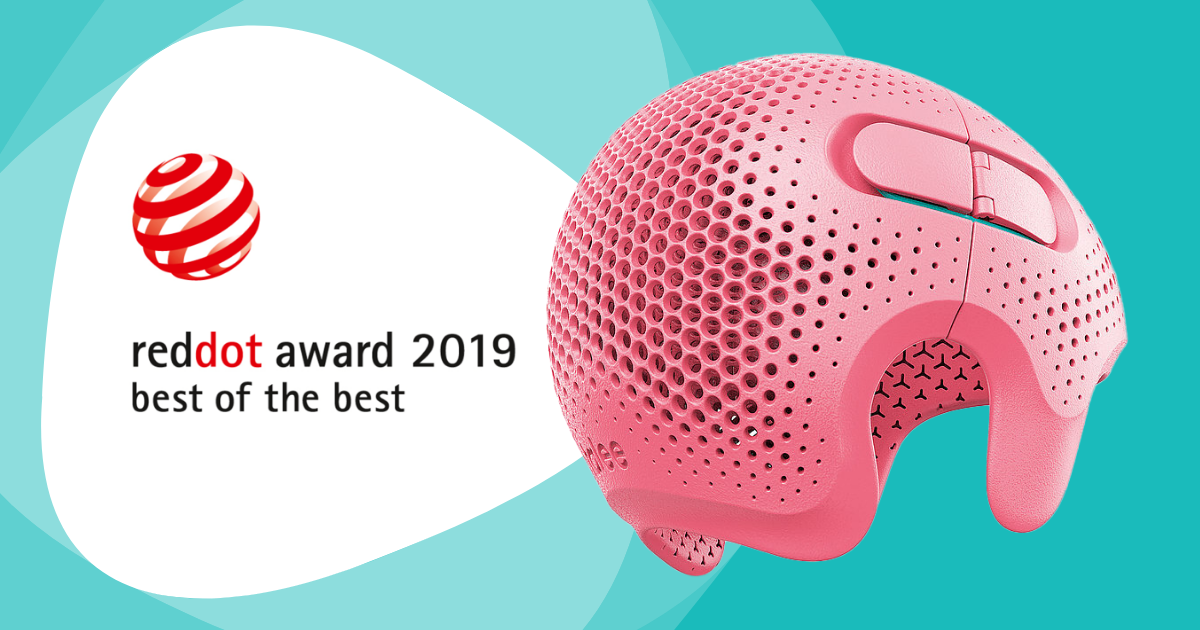
If you've noticed a flattening on your baby's head and have been trying to do your research online or via various other resources, you may be a little overwhelmed at the different types of flat head syndrome and what each variation means.
Flat head syndrome is understandably a confusing condition for many who are only just finding out about it, so let this resource be a quick and easy guide to the different types of flat head syndrome.
Flat Head Syndrome Definition
Flat Head Syndrome is the umbrella term used to describe various conditions whereby a deformity in a head shape is present. Flat head syndrome in babies can occur due to a number of reasons and can present itself in different forms, defined by the following conditions:
Plagiocephaly
One of the most commonly heard of variations of flat head syndrome is named plagiocephaly. This condition is characterised by an asymmetrical head shape, which many parents notice when their baby is around eight weeks of age.
When looking down on a baby's head, plagiocephaly can usually be identified as a flattening to the side of the skull behind the ear. Additionally, you might also see that the brow and the cheek on this side is pushed forward.
A plagiocephaly head shape resembles a parallelogram whereby there is a flattening at the back on one side of the head and a bulging area on the same side at the front. This is most easily seen when looking down on the head shape from above.
When a baby has a misshapen head, parents naturally wonder about the cause of it and whether it's something they would have been able to prevent. If this applies to you, head over to our guide to find out the common causes of plagiocephaly. Although the condition can't be prevented in some cases, it can be minimised if caught early enough and there are some good techniques for parents to be aware of in regards to helping prevent a flattening from developing.
Brachycephaly
Another type of flat head syndrome is known as brachycephaly, which shows as a wide head shape and a flattening across the back of the skull. The key difference between plagiocephaly and brachycephaly is that, unlike plagiocephaly, brachycephaly does not involve any asymmetry, rather just a wider head shape.
It is important to note that many babies with flat head syndrome have a combination of bothplagiocephaly and brachycephaly, so the conditions can look very different between babies.
When looking at a brachcephaly head shape from the side, the shape often looks high at the back and the brow might have been pushed forward too.
Scaphocephaly
This head shape is far less common than plagiocephaly or brachycephaly. Scaphocephaly is the term used to describe a long and thin head shape, and sometimes the ears are not aligned for babies with this condition. The condition is sometimes also referred to as dolichocephaly. A scaphocephaly head shape can be caused by an early fusion of one or more of the sutures between the head bones. This is called a synostosis but there are many cases where it is a deformational condition.
If there is a synostosis this cannot simply be treated by a cranial helmet and in such cases, surgery is required to correct the condition, after which a helmet can be used to help correct the remaining head shape deformity if desired.
Treatment for the Different Types of Flat Head Syndrome
Here at Technology in Motion, we see a variety of baby head shapes of different severities. Some parents catch their baby's flat head syndrome very early on in which case we recommend utilising repositioning techniques to correct the plagiocephaly or brachycephaly. These techniques are usually successful when started at an early age and when the flat head syndrome condition is still relatively mild.
However, although these measures are often successful for mild cases, they often aren't enough to correct more severe cases of flat head syndrome in babies, particularly if repositioning techniques haven't worked thus far. In such circumstances, our effective cranial helmet treatment can work wonders in correcting a head shape, as long as babies are between the age of 4 and 14 months, with the best results being achieved between 4 and 7 months of age.
Do the Different Types of Flat Head Syndrome Need to be Treated?
As the prevalence of flat head syndrome increased after the important back to sleep campaign in the 1990's, the true effects of untreated flat head syndrome haven't had a lot of coverage as many of that generation are still relatively young. However, it is truly important for parents to be aware of the effects of untreated conditions when deciding whether to opt for treatment or not. Our previous guide explains the long-term effects associated with plagiocephaly, which are also relevant to brachycephaly. Our blog post on untreated flat head syndrome covers some further points.


